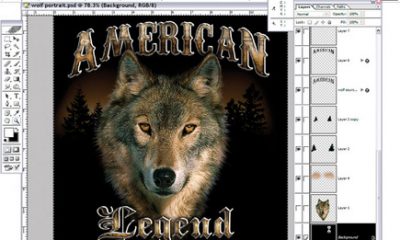Issues surrounding workplace safety and health do not disappear because a facility is utilizing digital technologies rather than traditional printing processes. Digital printing, recognized as a form of manufacturing, is not exempt from federal and/or state safety and health requirements. Post the required notices and maintain safety and health records for any injuries or illnesses that involve digital imaging systems in your operation.
Issues surrounding workplace safety and health do not disappear because a facility is utilizing digital technologies rather than traditional printing processes. Digital printing, recognized as a form of manufacturing, is not exempt from federal and/or state safety and health requirements. Post the required notices and maintain safety and health records for any injuries or illnesses that involve digital imaging systems in your operation. The following list explains how several regulations relate specifically to digital imaging: OSHA’s Hazard Communication Standard sets requirements for training, proper handling, personal protective equipment, permissible exposure limits, and proper disposal of products accompanied by Materials Safety Data Sheets (MSDS). Both inkjet and electrostatic cartridges fall under the purview of this standard. OSHA’s lockout/tagout safety standard requires facilities to warn employees about any electrical equipment under repair and take steps to ensure that the machine cannot be accidentally engaged. This standard includes all digital imaging devices. Any facility currently considered a major source of either VOC or HAP emissions may need to obtain a permit before installing digital printing equip- ment. Check with your local air-pollution control agency. Note that inkjet technologies are already included in some districts’ definition of graphic arts. States generally require operations not specifically listed in regulations to reduce emissions up to 85%, depending on whether the area is located in attainment or non-attainment areas identified by the EPA. Electrostatic, spray-jet, and some inkjet technologies for large-format work do contain rather high concentrations of solvents. However, emission rates are low due to application methods. Spent cartridges, particularly electrostatic, may need to be disposed of as hazardous waste because they’re considered combustible by the EPA’s definition. Check the MSDS to be sure. For resources to help you understand the requirements you need to meet, contact the Digital Printing and Imaging Association (DPI), 703-385-1335. You can also contact your digital material suppliers for information. We encourage you to take a few moments to look at your operation, list your questions, and call. It only takes a few minutes to get a handle on your compliance status. Do it today. About the authors Marcia Kinter joined SGIA International in 1989 to launch the Association’s government affairs program. As vice-president of government affairs, she represents the industry before state and federal agencies, as well as the US Congress. Kinter works to preserve the best interests of screen-printing and graphic-imaging businesses on health, safety, environmental, and other regulatory issues. Dan Marx has been government affairs associate for SGIA International since 1991. Primarily focusing on safety issues, Marx is responsible for developing Association training and compliance programs. He has written several articles on safety and the environment for industry trade publications.

 Art, Ad, or Alchemy1 month ago
Art, Ad, or Alchemy1 month ago
 Case Studies1 month ago
Case Studies1 month ago
 Andy MacDougall1 month ago
Andy MacDougall1 month ago
 Editor's Note1 week ago
Editor's Note1 week ago
 Columns2 weeks ago
Columns2 weeks ago
 Thomas Trimingham2 months ago
Thomas Trimingham2 months ago
 Marshall Atkinson1 week ago
Marshall Atkinson1 week ago
 Press Releases2 months ago
Press Releases2 months ago







